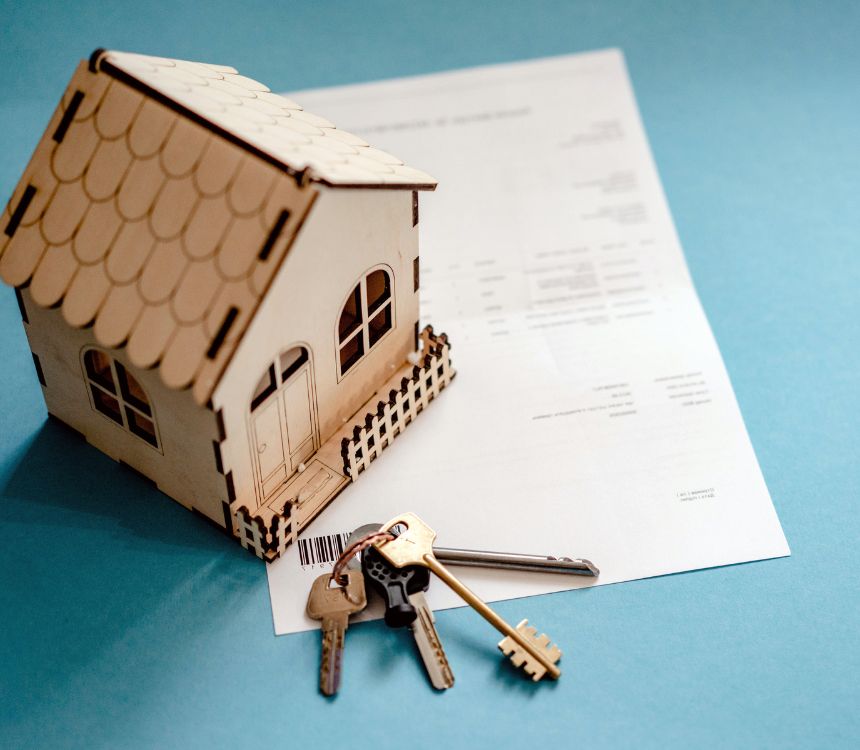If you’re looking to invest in a rental property, you’ll likely need a buy-to-let mortgage. Unlike standard residential mortgages, lenders assess buy-to-let (BTL) applications differently, with a stronger focus on rental income. However, proving your personal income is still an essential part of the process—especially if you’re a first-time landlord or buying through a limited company.
In this guide, we’ll break down how to prove your income for a buy-to-let mortgage, the documents lenders require, and how self-employed investors can navigate the process.
Do You Need to Prove Income for a Buy-to-Let Mortgage?
Yes, even though the primary focus is on rental income, lenders still check your personal financial position. This helps them assess affordability and ensure you can cover mortgage payments during void periods (when the property isn’t rented out).
Here’s what lenders typically look at:
Rental income potential – The expected rent should usually cover at least 125%–145% of the mortgage payments, depending on your tax status.
Personal income – Especially important for first-time landlords or if the rental income is borderline.
Employment status – Whether you’re employed, self-employed, or a limited company director, proving income varies.
Struggling to Prove Income for a Buy-to-Let Mortgage?
Let us find a lender that suits your situation. Call us now for expert help!
How to Prove Income for a Buy-to-Let Mortgage
The process differs based on your employment type. Here’s what you’ll need:
If You’re Employed
If you have a full-time or part-time job, proving income is relatively straightforward. Lenders typically request:
Payslips – Usually the last three to six months of payslips. 📄 P60 – Shows your total annual earnings and tax paid.
Bank Statements – Often required to verify payslip amounts.
Most lenders require a minimum personal income of £25,000 per year, though some accept lower amounts.
If You’re Self-Employed
For self-employed landlords, proving income is more complex. Since there are no fixed payslips, lenders rely on:
SA302 Forms – These are tax calculations from HMRC showing your declared income. Lenders usually ask for the last two to three years.
Tax Year Overviews – A summary of your tax payments to HMRC, used alongside SA302s.
Company Accounts (if applicable) – If you run a limited company, audited accounts for the last two to three years may be required.
Some specialist lenders are more flexible with self-employed applicants, considering projected earnings or using net profits instead of salary/dividends.
If You’re a Limited Company Director
Many landlords now buy property through a limited company (SPV – Special Purpose Vehicle) for tax benefits. Lenders will assess your business finances as well as personal income. Expect to provide:
Company accounts (last two to three years) – Showing profit and retained earnings.
Director’s salary & dividends – If you take a salary and/or dividends from your company, these must be documented with SA302s and tax overviews.
Business bank statements – Some lenders may request company bank statements to assess cash flow.
If You Have No Personal Income
Some landlords rely solely on rental income. While most lenders prefer applicants with a separate income stream, a few will consider those with a strong rental portfolio. In such cases, you may need:
Existing tenancy agreements – Proof of rental income from other properties.
Rental accounts/tax returns – Showing earnings from previous tax years.
Bank statements – Demonstrating consistent rental income deposits.

Can You Get a Buy-to-Let Mortgage with Low Income?
Yes, but options are more limited. Some lenders have no minimum income requirement, relying solely on rental yield. However, these mortgages usually have higher interest rates or stricter stress testing.
To improve your chances:
Consider a joint application – Partnering with someone who has a stable income can help.
Use a mortgage broker – They can find lenders willing to accept your circumstances.
Boost your deposit – A higher deposit (25% or more) can make lenders more flexible.
Can You Get a Buy-to-Let Mortgage with No Income?
Yes, but your options will be more limited. While most lenders prefer applicants with a minimum income of £25,000, some specialist lenders offer buy-to-let mortgages without a personal income requirement. Instead, they focus entirely on the rental income from the property.
To qualify without personal income, you’ll typically need:
- A strong rental yield, meeting the lender’s stress test (usually 125%–145% of the mortgage payment).
- A larger deposit (e.g., 30%–40% instead of the standard 25%).
- Experience as a landlord (though some lenders accept first-time landlords).
- A good credit history and stable financial track record.
If you don’t meet mainstream lenders’ criteria, a mortgage broker can help find specialist lenders willing to approve your application based purely on rental income.
Can You Get a Buy-to-Let Mortgage While on Benefits?
Yes, some lenders accept applications from individuals who receive benefits, but they will assess your income differently. Instead of focusing on benefits alone, they look at:
Rental income potential – Your expected rent must meet the lender’s affordability test (typically 125%–145% of the mortgage payments).
Other income sources – If you have part-time work, pensions, or savings, this strengthens your application.
Your credit history – A strong credit score improves your chances.
Deposit size – A higher deposit (30%+ instead of the standard 25%) makes lenders more flexible.
Some high-street banks may be stricter, but specialist buy-to-let lenders and mortgage brokers can help find suitable options.
Which Benefits Do Lenders Accept?
Lenders vary in their policies, but some will consider:
- Universal Credit
- Disability Living Allowance (DLA) / Personal Independence Payment (PIP)
- Employment and Support Allowance (ESA)
- State Pension / Pension Credit
- Child Benefit (if a dependent is under 14)
However, if benefits are your only income, lenders may require a strong rental yield or a joint application with someone who has an additional income source.
How to Improve Your Chances of Approval
- Work with a mortgage broker – They can find lenders who accept benefit income.
- Save for a higher deposit – The lower the mortgage amount, the lower the risk for lenders.
- Consider a joint mortgage – Applying with a partner who has additional income can help.
- Improve your credit score – A clean credit history makes you a stronger applicant.
Key Takeaways
- Lenders primarily assess rental income but still require proof of personal income.
- Employed applicants need payslips, while self-employed landlords must provide SA302s and tax records.
- Limited company directors must show company accounts and personal salary/dividends.
- Some lenders accept applications without personal income, but choices are more limited.
Navigating the buy-to-let mortgage process can be tricky, but with the right documentation and preparation, securing finance for your rental investment is achievable.
Looking for the best buy-to-let mortgage rates? Speak to a mortgage broker to find lenders who suit your situation.
FAQs
What is a buy-to-let mortgage?
A buy-to-let mortgage is a loan meant for people who want to buy property to rent it out. These mortgages differ from residential loans because they focus more on how much income the property can generate from tenants instead of the borrower’s personal earnings.
How much deposit do I need for a buy-to-let mortgage?
Typically, lenders require a deposit of at least 25% of the property’s value for a buy-to-let mortgage. However, some may accept deposits as low as 15%, depending on the rental income potential and the lender’s criteria.
What are the income requirements for a buy-to-let mortgage?
Many lenders tend to favor applicants with a minimum personal income, usually set at around £25,000 per year. This threshold serves as a sign of financial stability and helps guarantee that the borrower can manage potential shortfalls, such as times when the property might be vacant.
Can I get a buy-to-let mortgage if I’m self-employed?
Yes, self-employed individuals can obtain buy-to-let mortgages. Lenders will typically require proof of income, such as SA302 tax calculations and tax year overviews from HMRC, usually covering the last two to three years.
How is rental income assessed by lenders?
Lenders expect the rental income to cover a certain percentage of the mortgage payments, typically between 125% and 145%. This ensures that the rental income not only covers the mortgage but also provides a buffer for other expenses.
Are there age restrictions for buy-to-let mortgages?
Most lenders have minimum and maximum age limits. Generally, the minimum age is between 21 and 25 years old, and the maximum age at the end of the mortgage term can range from 70 to 85 years.
Can I live in my buy-to-let property?
No, buy-to-let mortgages are specifically for properties intended to be rented out. If you wish to live in the property, you’ll need a standard residential mortgage.
What types of properties can I purchase with a buy-to-let mortgage?
Most lenders accept standard residential properties. However, if you’re considering non-standard properties, such as HMOs (Houses in Multiple Occupation) or properties above commercial premises, lending criteria may be stricter, and specialist lenders might be required.
Are buy-to-let mortgages interest-only or repayment?
Many buy-to-let mortgages are offered on an interest-only basis, meaning you pay only the interest each month and repay the capital at the end of the term. However, repayment mortgages are also available, where monthly payments cover both interest and capital.
What are the tax implications of owning a buy-to-let property?
Landlords must pay income tax on the profits they earn from rentals and could face capital gains tax when selling the property. Recent changes to tax laws have also limited the amount of mortgage interest relief they can receive. To navigate these obligations effectively, it’s a good idea to speak with a tax professional.
Is tenancy in common suitable for investment properties?
It depends. Investors sometimes choose this structure to allow multiple people to contribute different amounts. However, disputes over rental income, property management, and selling decisions can make it a risky option without a clear legal agreement in place.
How can disputes between tenants in common be resolved?
Disputes can arise over property management, financial contributions, or decisions to sell. It’s prudent to have a well-drafted agreement in place outlining each owner’s rights and responsibilities. In the absence of such an agreement, mediation or legal action may be necessary to resolve conflicts.
Can I use my income to cover rental shortfalls?
Yes, some lenders allow applicants to top up rental shortfalls with their personal income, a process known as top slicing. This is useful if the rental income doesn’t meet the lender’s stress test (usually 125%–145% of mortgage payments).
To qualify, you typically need:
- A stable personal income from employment or self-employment.
- A strong credit history to show financial responsibility.
- Evidence that your income is sufficient to cover both personal expenses and mortgage shortfalls.
Not all lenders offer top slicing, so working with a mortgage broker can help find the right lender for your situation.
Continue Reading
Do you pay solicitors fees when remortgaging?
Right to Buy mortgage with No deposit
Mortgage brokers first-time buyers London
Self-employed mortgages London
High-rise flat mortgages London
Right to buy: can I buy my council house?
Can You Get a Mortgage on a Flat Without an EWS1 in the UK?
Single brick construction mortgage
How much can I borrow for a mortgage?
Mortgage with a gifted deposit
Joint mortgage with bad credit
Can you add someone to a mortgage?
Remortgaging a buy-to-let property London
Buy to let mortgages for first-time buyers
First-time buyers bridging loans
Do you need a mortgage for Right to Buy?
Bad credit mortgage brokers London
Remortgage for self-employed borrowers
